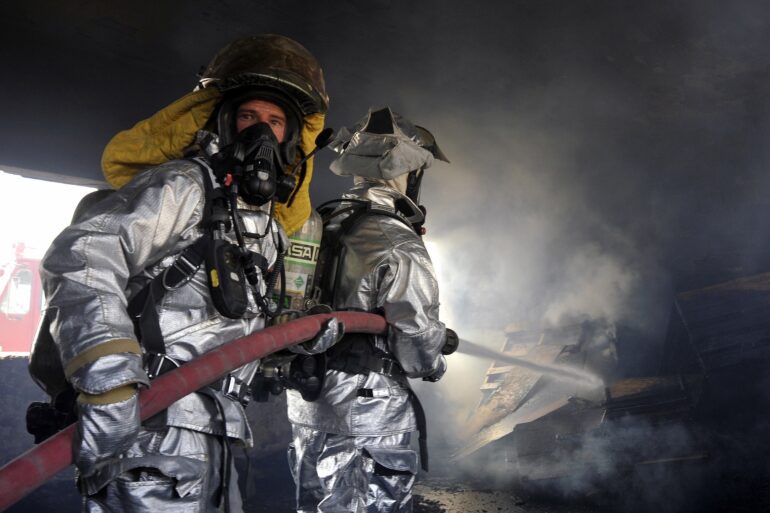TL;DR:
- Firefighters face a significant risk of sudden cardiac death while on duty, accounting for 40% of on-duty fatalities.
- Researchers at NIST, in collaboration with the University of Rochester and Google, have developed an AI system using machine learning to detect abnormal cardiac rhythms in firefighters.
- The AI system, called Heart Health Monitoring (H2M), achieved a remarkable accuracy rate of 97% in identifying abnormal ECG samples.
- The H2M model could be integrated into portable heart monitors worn by firefighters, providing real-time warnings and potentially saving lives.
- This technology has the potential to extend beyond firefighters and benefit other first responders and the general public.
Main AI News:
In the line of duty, firefighters often face life-threatening situations. Surprisingly, it is not fire or smoke inhalation that poses the greatest risk but sudden cardiac death, which accounts for approximately 40% of on-duty fatalities. However, thanks to groundbreaking research conducted by the National Institute of Standards and Technology (NIST) and their collaborators, there is hope on the horizon. By harnessing the power of machine learning, these researchers have successfully developed an AI system capable of accurately detecting abnormal cardiac rhythms in firefighters, potentially saving countless lives.
Published in the esteemed Fire Safety Journal, the findings of the NIST, University of Rochester, and Google team offer a glimmer of hope in an otherwise dire situation. The tragic reality is that sudden cardiac death claimed the lives of 36 firefighters while on duty in 2022, as reported by the National Fire Protection Association. This devastating outcome occurs when an irregular heart rhythm causes the heart to cease pumping blood, commonly due to a heart attack. Shockingly, firefighters experience sudden cardiac events at a rate twice as high as police officers and four times higher than other emergency responders.
For NIST researcher Chris Brown, the urgency to address this grave issue is evident. “Year after year, sudden cardiac events are by far the number one killer of firefighters,” Brown emphasizes. “Cardiac events also cause career-ending injuries and long-term disabilities.” It is a somber reality that demands immediate attention.
Firefighters face extraordinary physical demands while on the job, enduring strenuous environments, carrying heavy loads, climbing stairs, and enduring extreme temperatures with limited means of cooling off. Despite their resilience, reports have shown that firefighters often persevere through these challenges without recognizing the potential risks of sudden cardiac death.
Recognizing the need for intervention, the NIST researchers reached out to their colleagues at the University of Rochester School of Nursing. A decade ago, researcher Mary Carey and her team collected a unique dataset of electrocardiogram (ECG) data from 112 firefighters, who wore chest straps with electrodes for 24 hours. This data encompassed their 16-hour on-duty shifts as well as their eight-hour off-duty shifts, during which they engaged in various activities such as responding to fire and medical calls, exercising, eating, resting, and sleeping.
“The firefighter data we collected is so unique,” explains Dillon Dzikowicz, a co-author from the University of Rochester. “Having robust data is essential to move our work forward and protect firefighters.” Armed with this invaluable dataset, the researchers turned to machine learning, combining it with the Rochester dataset to create the revolutionary Heart Health Monitoring (H2M) model.
Training the H2M model with 12-second segments of extensive ECG data, the researchers classified individual heartbeats as normal or abnormal, indicating irregular heart rhythms like atrial fibrillation or ventricular tachycardia. “The model is designed to effectively learn ECG patterns from both normal and abnormal beats,” explains Jiajia Li, a guest researcher at NIST.
Once trained and validated, the H2M model analyzed firefighter ECG data that it had not encountered before. Astonishingly, when presented with approximately 6,000 abnormal ECG samples, the model accurately identified them with an impressive 97% accuracy rate. As an additional test, the researchers trained H2M using ECG datasets from non-firefighters. In this scenario, the model displayed an error rate of about 40% when identifying cardiac events in the firefighter data.
The critical aspect of this breakthrough lies in the careful selection of the training dataset. “Using the right dataset to train the AI model was critical,” affirms NIST researcher Wai Cheong Tam. This realization brings hope for a future where portable heart monitors incorporating this AI technology could be worn by firefighters while on duty, providing real-time warnings of cardiac irregularities. This AI assistant could serve as a virtual cardiologist, accompanying fire crews and potentially saving lives in the process.
Tam passionately highlights the life-saving potential of this technology, envisioning its expansion to benefit other groups. “This technology can save lives,” Tam asserts, emphasizing that by training the AI model with appropriate ECG datasets, it could extend its benefits to other first responders and the general public at large. The possibilities are truly remarkable.
Conclusion:
The development of an AI system capable of accurately predicting potentially fatal cardiac events in firefighters marks a significant breakthrough in the market. The integration of this technology into portable heart monitors has the potential to revolutionize the safety and well-being of firefighters, offering real-time warnings and early detection of cardiac irregularities. Moreover, the expansion of this technology to other first responders and the general public opens up new opportunities for improving healthcare and saving lives in high-risk environments. This advancement showcases the immense potential of AI in addressing critical challenges and highlights the growing demand for innovative solutions in the healthcare and safety sectors.

